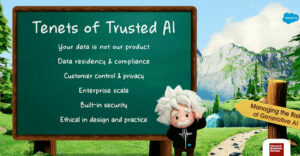
While CRM has always been “social,” it’s now starting to get “Social” — in other words, it’s starting to tap into the ways customers have seized control of their relationships with the people they buy from through technology, participation and the ability to reach more people — and more-important people, as they see it — than they ever could in the past.
While Social CRM promises to open new doors for companies that understand it and embrace it, it also allows companies to screw up in new, exciting ways.
Turning a blind eye to the era of the social customer is a bad idea, but a worse idea is to launch into a Social CRM effort half-heartedly or to fail to grasp your responsibilities as a participant in the business-customer conversation.
Past CRM efforts launched with the wrong objectives in mind resulted in wasted investment, damaged customer relationships, and a lack of transparency into which processes may have gone wrong. Badly-directed Social CRM can achieve all those dubious distinctions faster and more thoroughly. Worse, they can sour your organization on ever trying them again — even as your competitors move increasingly toward a social model.
Here are three guaranteed ways to kill your Social CRM strategy.
1. Treat Social Media as a Billboard, not a Conversation
For most businesses, the initial attraction of social media has been its ability to reach many people — and it can do that. But it’s not a one-way channel for blasting out your message; that’s what email marketing is for. Social media is different, in that customers can respond back to you — and they expect responses in return.
Your organization needs to be able to respond in useful, constructive ways; not responding leaves the question hanging for all to see, and responding badly can damage your brand.
Before you embark on a social strategy, make sure you have the bandwidth to handle all the channels you plan to engage, and that the people doing the engaging have the savvy, training and — perhaps most importantly — backing from the leadership to do the job right.
2. Use the Data You Collect Without Discretion
“Discretion,” in this case, should not be read to mean that you would willingly spill the beans about customers’ data in an inappropriate way. Rather, it means that while customers like to know that the businesses they patronize care about them, they don’t like the idea that those businesses may have built a dossier about them based on their online activities.
If you begin conversations with customers by dropping in details about their personal lives — even if they’re readily available details, like the number of kids they have or their hobbies — they are likely to be creeped out by your interaction, and their relationship with you can take a turn for the worse.
It becomes vital that you place yourself in the customer’s shoes in this scenario. If a business I was working with suddenly disclosed a specific bit of knowledge about me, would I be unnerved? Having the data in your back pocket to help influence your strategy is fine, but using it in a ham-handed manner is a great way to make people think you’re running an Orwellian organization.
3. Fail the Authenticity Test
Customers love personal relationships with the companies they like to do business with. Those relationships are based on their authenticity. Thus, if you bring canned responses, transparent marketing pitches and a “company line” tone to the authentic conversations your customers are trying to have with you, you can poison those relationships permanently.
That behavior is bad when it takes place in a channel you control, like a community about your company. However, when you seek out your customers on other channels and then give them lame, canned and inauthentic responses, it’s like broadcasting to the world that you’re a phony.
You can’t succeed in anything social unless you really want to be social yourself, and that means abandoning the old approaches — which tried to control the conversation — and being real with your customers while still maintaining an idea of what you hope to achieve.
Authenticity should be in the foreground, and your objectives should remain in the background. Don’t forget that every interaction you have is seen by many more people than just the one customer you’re communicating with; getting it right has the same widespread impact as getting it wrong.
CRM Buyer columnist Chris Bucholtz blogs about CRM at Forecasting Clouds. He has been a technology journalist for 15 years and has immersed himself in the world of CRM since 2006. When he’s not wearing his business and technology geek hat, he’s wearing his airplane geek hat; he’s written two books on World War II aviation, and his next two are slated for publication in 2010.






















































